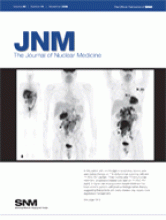Article Information
PubMed
Published By
Print ISSN
Online ISSN
History
- Received for publication November 26, 2007
- Accepted for publication July 22, 2008
- Published online November 4, 2008.
Article Versions
- previous version (October 16, 2008 - 11:24).
- You are viewing the most recent version of this article.
Copyright & Usage
© 2008 by Society of Nuclear Medicine
Author Information
- Matthias Hofmann 1–3 ,
- Florian Steinke 2 ,
- Verena Scheel 1 ,
- Guillaume Charpiat 2 ,
- Jason Farquhar 2 ,
- Philip Aschoff 4 ,
- Michael Brady 3 ,
- Bernhard Schölkopf 2 and
- Bernd J. Pichler 1
- 1Laboratory for Preclinical Imaging and Imaging Technology of the Werner Siemens-Foundation, Department of Radiology, Eberhard-Karls-University, Tuebingen, Germany; 2Max Planck Institute for Biological Cybernetics, Tuebingen, Germany; 3Wolfson Medical Vision Laboratory, University of Oxford, Oxford, United Kingdom; and 4Department of Radiology, Eberhard-Karls-University, Tuebingen, Germany
- For correspondence or reprints contact: Bernd J. Pichler, Laboratory for Preclinical Imaging and Imaging Technology of the Werner Siemens-Foundation, Röntgenweg 13 72076, Tuebingen, Germany. E-mail: Bernd.Pichler{at}med.uni-tuebingen.de







